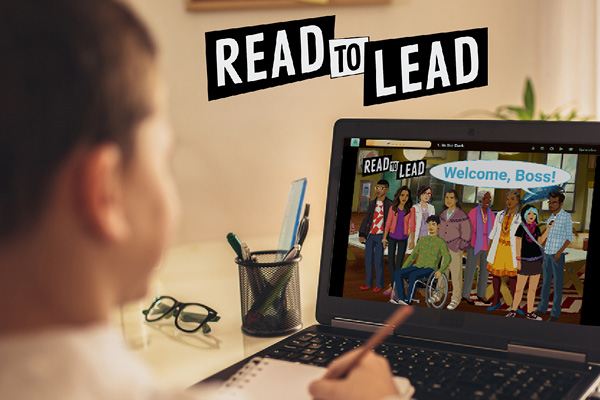Ensuring students’ social-emotional needs are met
As we head into the seventh month of the epidemic, with return to school buildings being delayed across the United States, middle school students face ever increasing social-emotional and academic challenges. With students experiencing the various incarnations of school (homeschool, remote, hybrid and brick and mortar learning), it’s never been more important for teachers to focus on the whole child and ensure that students’ social-emotional and academic needs are being met.
Now more than ever, it’s critical that educators make sure students feel connected to one another while continuing to learn. As Education Dive noted in April 2020, students “will return to school with collective trauma, higher anxiety levels and more stress after dealing with everything from child abuse and neglect to unemployment and loss of life.” This is especially true for middle school students, who are in a unique developmental moment in their lives. By intentionally incorporating a holistic, whole child approach to instruction, middle school educators can provide meaningful support to their students while also meeting academic goals.
In January 2019, the Aspen Institute National Commission on Social, Emotional, and Academic Development released From a Nation at Risk to a Nation at Hope, a report seeking to “accelerate and strengthen efforts to support the whole learner in local communities through recommendations for researchers, educators, and policymakers.” In presenting this report, the Commission reinforced that “overwhelming evidence demands that we complement the focus on academics with the development of the social and emotional skills and competencies that are equally essential for students to thrive in school, career, and life.”
Supporting Social-Emotional Needs
While a whole child approach is important throughout a student’s educational journey, middle school is a critical moment. During this time, adolescent brains are going through rapid development, making it even more important to support self-regulation, instill a growth mindset, and incorporate students’ social-emotional needs into the school day.
Over the last few months, COVID-19 has had an incalculable impact on the world, resulting in an even stronger need for educators to support students beyond their academic growth. Middle school students are already experiencing significant physical and emotional growth. The additional stress and trauma of school closures, losing time with friends and family, and coping with incredible uncertainty increases the need of a holistic approach that meets their social-emotional needs.
Curriculum and Instruction
To ensure students continue progressing on both academic and social-emotional fronts, it’s critical that educators are intentional about their curriculum and their approach to instruction. As Helen Brandon wrote in an article for AMLE earlier this year, understanding “the developmental characteristics of adolescents provides the foundation for a developmentally responsive curriculum that meets their needs and is flexible to their learned experience. Curriculum created within the walls and outside of the walls of the school should embrace this experience.”
The idea of incorporating a whole child curriculum may seem less important than meeting rigorous academic demands. Fortunately, this perspective has largely shifted over the last two decades. In a 2011 piece on the history of social emotional learning, Edutopia acknowledges the change in mindset. “Teaching the soft skills, traditionally associated with conflict resolution and character education, has evolved from being considered ‘wishy-washy’ to being an integral part of educating the whole child.” A holistic approach requires that educators use various learning modalities that incorporate appropriate content, collaboration, and empathy. Fortunately, many curriculum providers have recognized the need to provide resources that blend academic and social-emotional learning.
Holistic Curriculum in Action: The Read to Lead Approach
During this challenging time it is essential that teachers have access to curricula that allows for reading and writing skill development, supports problem solving, develops empathy, encourages growth mindset and offers the opportunity to create deep connections in a variety of learning environments.
Read to Lead is a free and proven game-based learning platform that invites students to “be the boss” in a virtual workplace. Students read closely through their virtual workday, and must think critically, lead a diverse team, and solve complex workplace problems. The interactive reading experience provides educators with a proven model and tools for developing literacy, life, and career skills. The program puts students in a leadership position in a virtual workplace and engages them holistically through relevant and relatable scenarios. Importantly, it allows teachers to more easily improve reading and writing skills, and meet the social-emotional needs of their middle school students, all on one tool.
In addition to the learning games, Read to Lead provides educators with the data they need to monitor student progress, as well as numerous corresponding lesson plans, activities, and projects to differentiate the learning experience. Because it’s a free digital platform, Read to Lead supports educators in meeting the instructional and social-emotional learning needs of students in all classroom environments, from brick and mortar to hybrid and remote.
It’s never too late to start implementing a holistic approach to instruction. The lasting effects of COVID-19, coupled with the realities of the adolescent experience make it critical that educators include social-emotional components in the core curriculum. To learn more about Read to Lead and how the program fits in a whole child approach, visit rtlgames.org.
